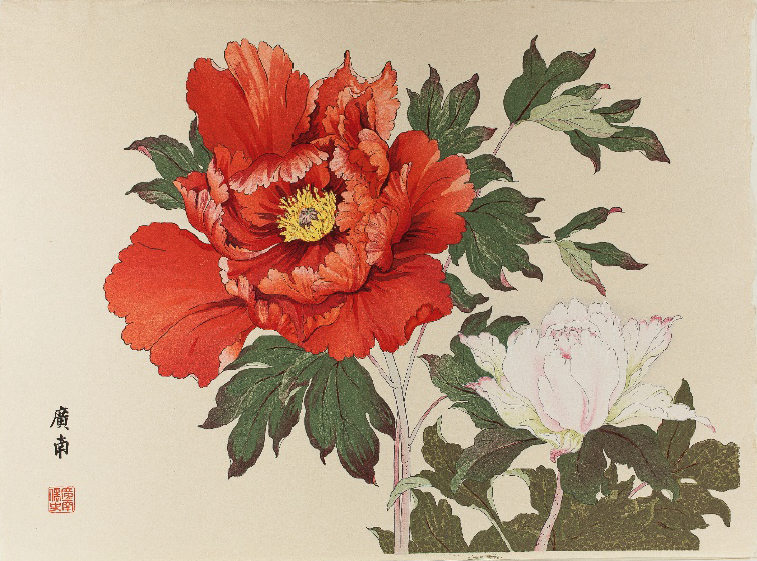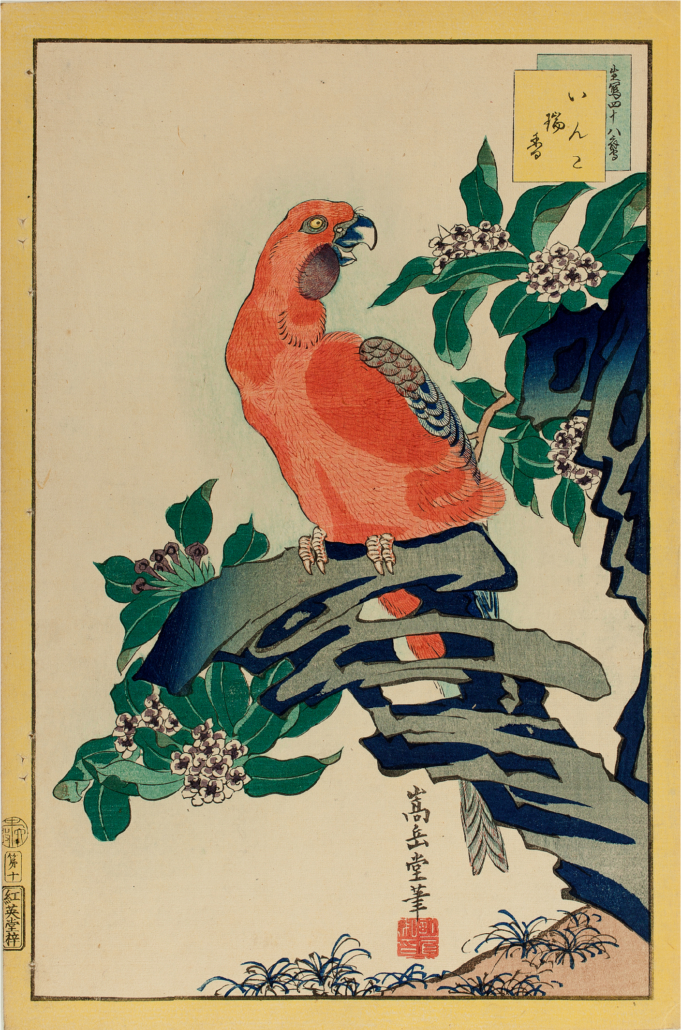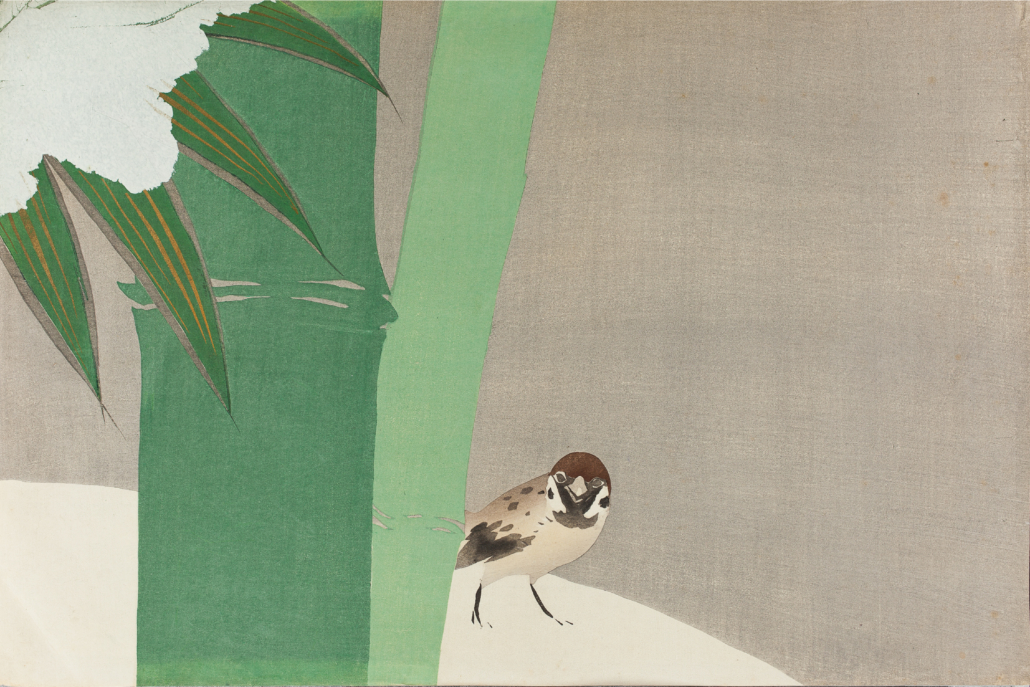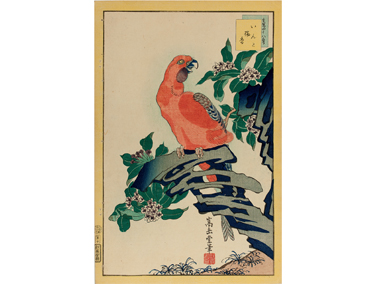
SANTA BARBARA, Calif. — The John and Peggy Maximus Gallery at the Santa Barbara Museum of Natural History has departed from its usual emphasis on early Western scientific illustration to present Kachō-e: Impressions of Natural History in Japanese Prints thanks to a loan from artist and collector Bill Logan.
The exhibit, which opens on October 4, features more than 40 antique prints by notable 18th- and 19th-century Japanese artists like Katsushika Hokusai (who created the iconic Thirty-six Views of Mount Fuji and The Great Wave off Kanagawa) and Kawamura Bumpo. It will also include a carefully arranged selection of chrysanthemum prints, and a menagerie of spirited animals that seem prepared to leap, swim, fly, and slither off the page.
As a complement to the exhibit of antique prints, a special display in the Maximus foyer will showcase work by Bill Logan, whose exuberant ink paintings of owls, cats, and blooms look as if they might have tumbled onto his paper in the manner of early Japanese brushwork.
What is Kachō-e?

The uniquely Japanese art form called ukiyo-e, or “pictures of the floating world,” flourished from the 17th to 19th centuries and produced great quantities of woodblock prints depicting scenes of daily life, landscapes and portraits. Within that broader framework was kachō-e, a genre of nature studies that included birds, flowers, insects, reptiles, and other animals.
The work on display in the exhibit spans one of the most creative eras in the history of Japanese art. For 220 years, the Tokugawa Shogunate, a feudal military government, enforced almost total isolation. Sequestered, Japanese culture and picture making found its own way in a vacuum.

Change came in 1868 when rule was restored to Emperor Meiji, whose rein was marked by trade with the West, rapid modernization, and the birth of a vibrant new creative aesthetic. Both of these eras and the changes that occurred in Japanese culture are represented in this exhibit.
About the Santa Barbara Museum of Natural History
Founded in 1916, the Santa Barbara Museum of Natural History inspires a thirst for discovery and a passion for the natural world. The museum seeks to connect people to nature for the betterment of both, and prides itself on being naturally different. For more information, click to visit SBMNH online.
# # #



